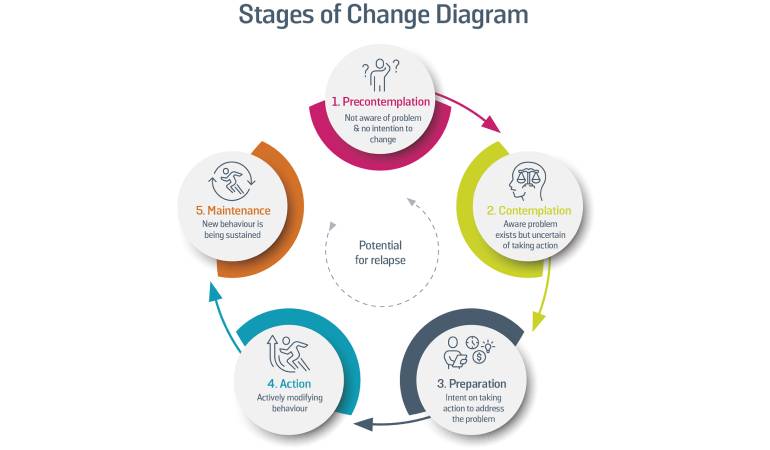
Are You Considering Making a Change? Yes but No.
So, there’s a change you’ve been wanting to make, but you just haven’t gotten any traction on it. Maybe you want to quit smoking, you want to write your memoir, or you want to lose weight. You know you’d be happier if you did or had a sense of accomplishment. But there you are, with nothing more than good intentions.
If this describes you, you are stuck in stage two of the Stages of Change Model. In 1983, Prochaska and DiClemente developed the Stages of Change model, which describes the different stages a person goes through as they attempt to make significant changes. The model includes six stages that people move through as they work to change behavior.
In stage one, pre-contemplation, you are in denial. Stage 2 is contemplation. In this stage, you may say, “I know I have a problem, and I think I should do something about it.” But you don’t. You get lost in the pros and cons. You consider change and reject it. It’s yes, but no. The definition of “ambivalent” is to have opposing or conflicting feelings at the same time. You go back and forth about the need to change and the justification for not changing. “This is my last cigarette, but I don’t want to waste money, so I’ll just finish the pack.” “I’m going to write my book, but the process is overwhelming.” “I want to go to the gym three times a week, but I’m too busy.”
People in this stage are often unmotivated, resistant to change, and unaware of the benefits of change. They overestimate the costs of changing, defend their current habits, and are unwilling to seek help. They may avoid gathering helpful information and are more likely to focus on the negative aspects of change. No wonder they are not making progress on their goal!
If this is you, here’s what you can do.
Be clear about your ambivalence. Write down what you want to change and write your justifications against the change.
I want to ___________________________, but __________________________________.
Assess your readiness for change. Think of a ruler representing a continuum of change from 0 to 10, where 0 means not ready, or not important at all, and 10 means very important, or completely ready. Ask yourself where you fall on the scale.
- How important is this change?
- How confident are you that you can make this change?
- How ready are you to make this change?
Ask yourself what small action you could take to move one step closer to 10.
If you’re not ready to make a change, that’s okay. It might not be the right time for you. But being clear about why you are not making the change is helpful. The use of readiness and confidence scales is associated with improved quality of life. When you feel stuck, review these steps.
